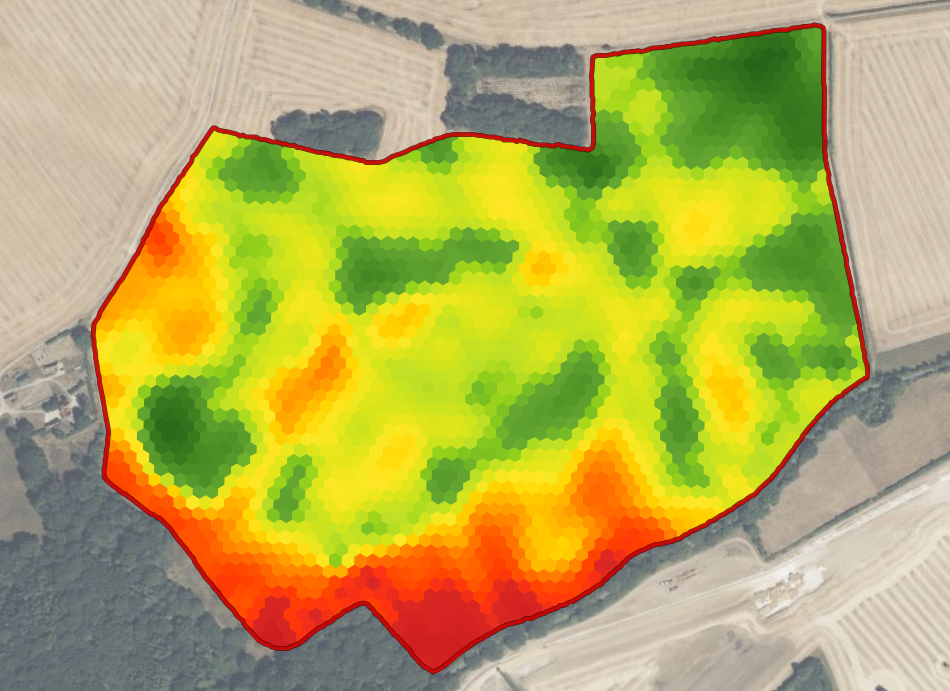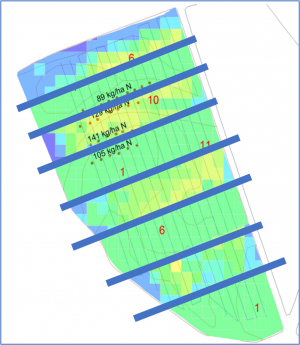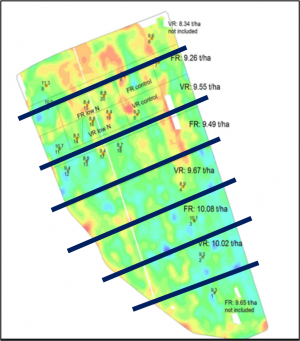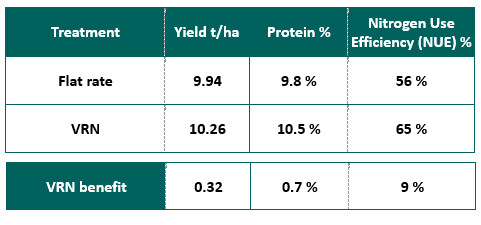Variable rate nitrogen trials results
As the season has been so challenging, it's great to be able to demonstrate the positive results from our variable rate nitrogen (VRN) trials which can make a difference on farm. In this blog, we'll be talking through the benefits and value of this technology, as well as how the findings from the trials can be replicated on your farm to achieve the same positive results.
Why VRN?
In a world where the pressure to deliver more from less is higher than ever before, there is an increasing need to make sure every kilo of nitrogen count and used in the right place at the right time. While essential for generating yield, more efficient nitrogen management can positively contribute to environmental targets too.
In response to this widening scope, SOYL VRN trials have been measuring not only the benefit on yield and grain protein levels, but also nitrogen use efficiency (NUE). NUE is a measure of how much applied nitrogen is taken up and used by a crop, rather than at risk of being lost through leaching or to the atmosphere.
How VRN works
Our variable rate service uses remote sensing technology to assess crop canopy variation so that users can create targeted nitrogen application plans.
By supplying detailed imagery to customers from a number of satellites, some of which are tasked specifically in order to supply additional images that would otherwise be unavailable elsewhere, we can provide maximum field coverage for any given area. In January 24, despite the challenging weather, we were able to supply 100% satellite coverage for all users, giving them vital insights from wide ranging biomass imagery to support their application plans and timings.
How the trials are carried out
When we plan our trials, our team works from all previous precision farming data that's been collected to inform the approach. This includes nutrient, yield and biomass maps from previous seasons which ensures we can place our trials in a way that will not give biased results.
We then take a soil nitrogen sample before the season starts, so we can see how much nitrogen will be naturally provided by the soil. Through the season we compare a VRN plan against a flat rate which would be considered a 'farmer's best practice' approach.
The 2023 results
Across the seven trials in wheat that were carried out in 2023, VRN showed a yield benefit of 0.32t/ha – if grain price is £150/t this equates to £48/ha.
VRN also delivered an increase of 0.7% in protein when compared to the flat rate 'farm standard' approach. These results are in line with the many trials we have conducted over the years.
Of particular importance is the NUE results, especially when we take into account the increasing focus on product stewardship, environmental protection and cost of inputs vs. benefits delivered. An improvement in NUE of 9% was seen across the trials, which is significant given the cost but also the high carbon footprint of nitrogen fertiliser.
Achieve positive results on farm
Along with the yield, protein, NUE and environmental benefits of VRN, incorporating it into your nutrition strategy means you can be more considered with applications, thereby optimising inputs and potentially reduce your nitrogen expenditure. Though we've seen positive results in our trials for a number of years now, it's important to keep exploring and testing this technology in new scenarios – particularly in increasingly challenging conditions. The learnings speak for themselves, with VRN continuing to deliver quantifiable benefits on farm.
A VRN plan can be created in our MySOYL application in minutes using the nitrogen tool - helping you make the most of even the smallest application window. This is something you can do yourself and if you're unsure how, the below tutorial can help. Alternatively, you can ask one of our experts to create the plans to your specifications.
Use of variable rate technology as part of the SFI
It was announced in January that that from summer, the Sustainable Farming Incentive (SFI) will incorporate several new actions linked to precision farming. One such option is the variable rate application of nutrients, currently offering a payment of £27/ha.
For more information about the use of precision technology as part of the SFI, or if you'd like to learn more about our VRN service, you can contact at our team by emailing This email address is being protected from spambots. You need JavaScript enabled to view it. or calling 01635 204 190. More information is also available on the SOYL website.
As a subscriber, you’ll receive email alerts each time a new blog is published so you can always stay updated with the latest advice and insights from our experts








Comments